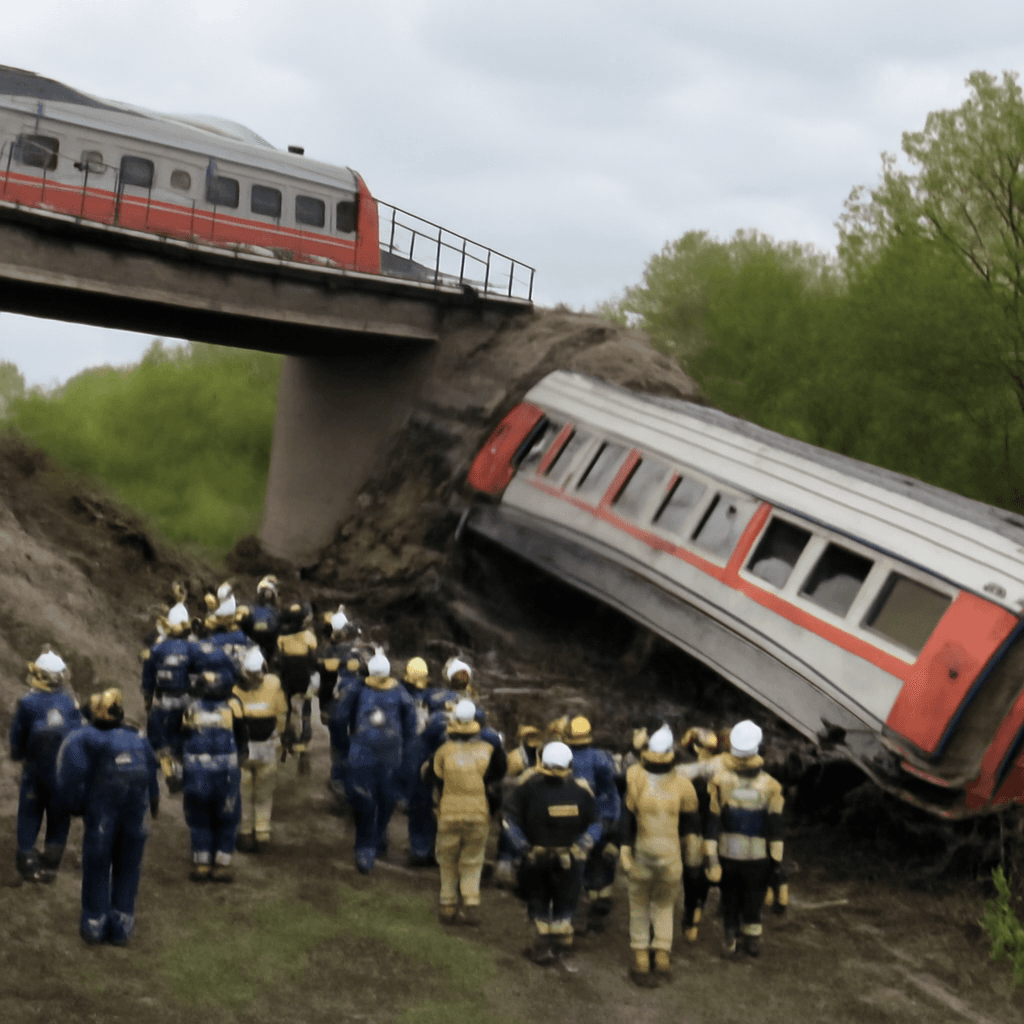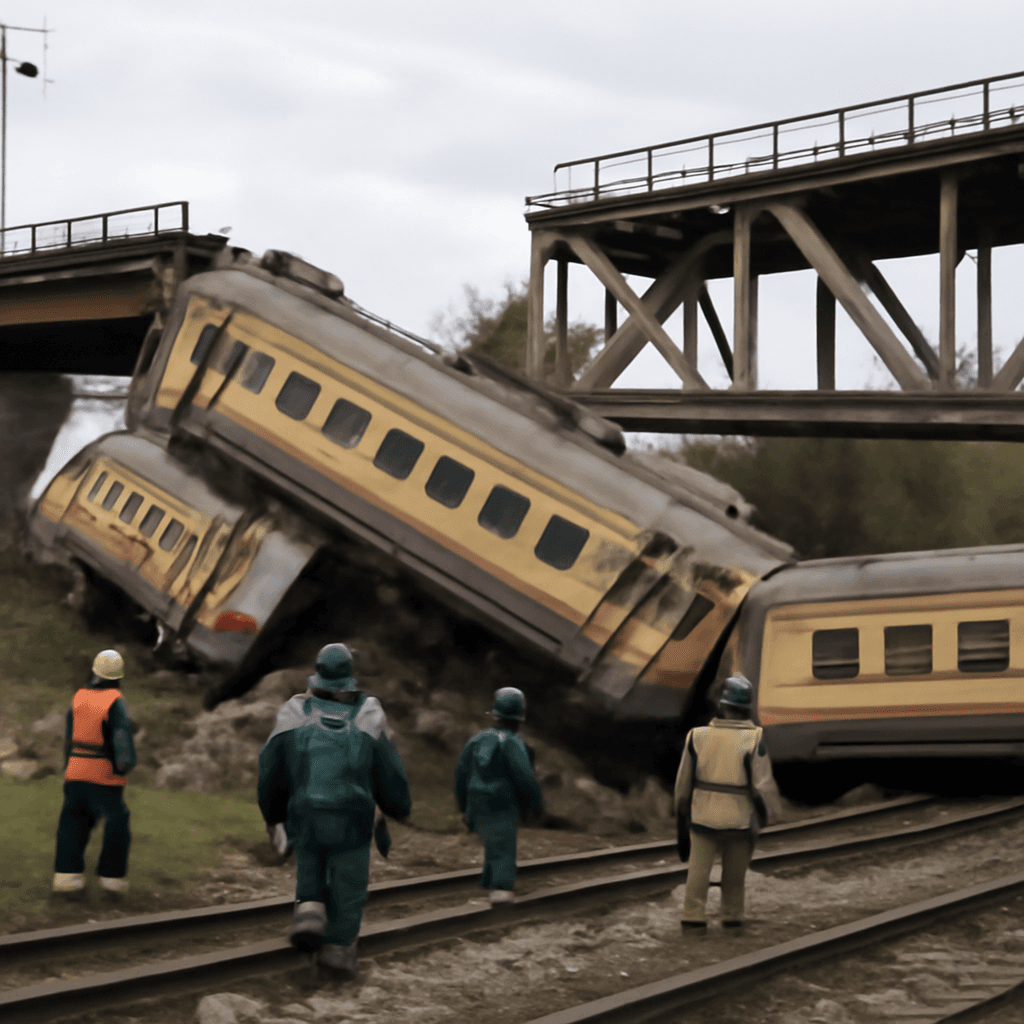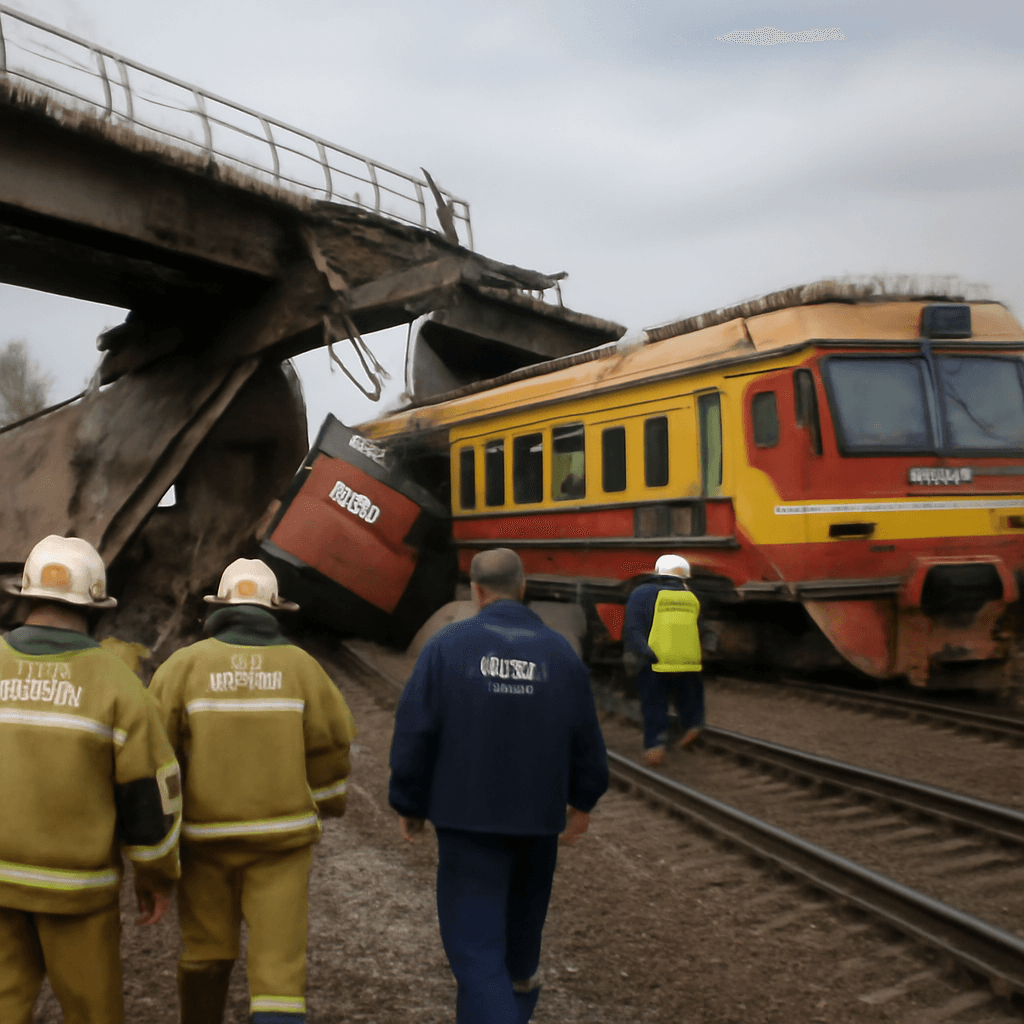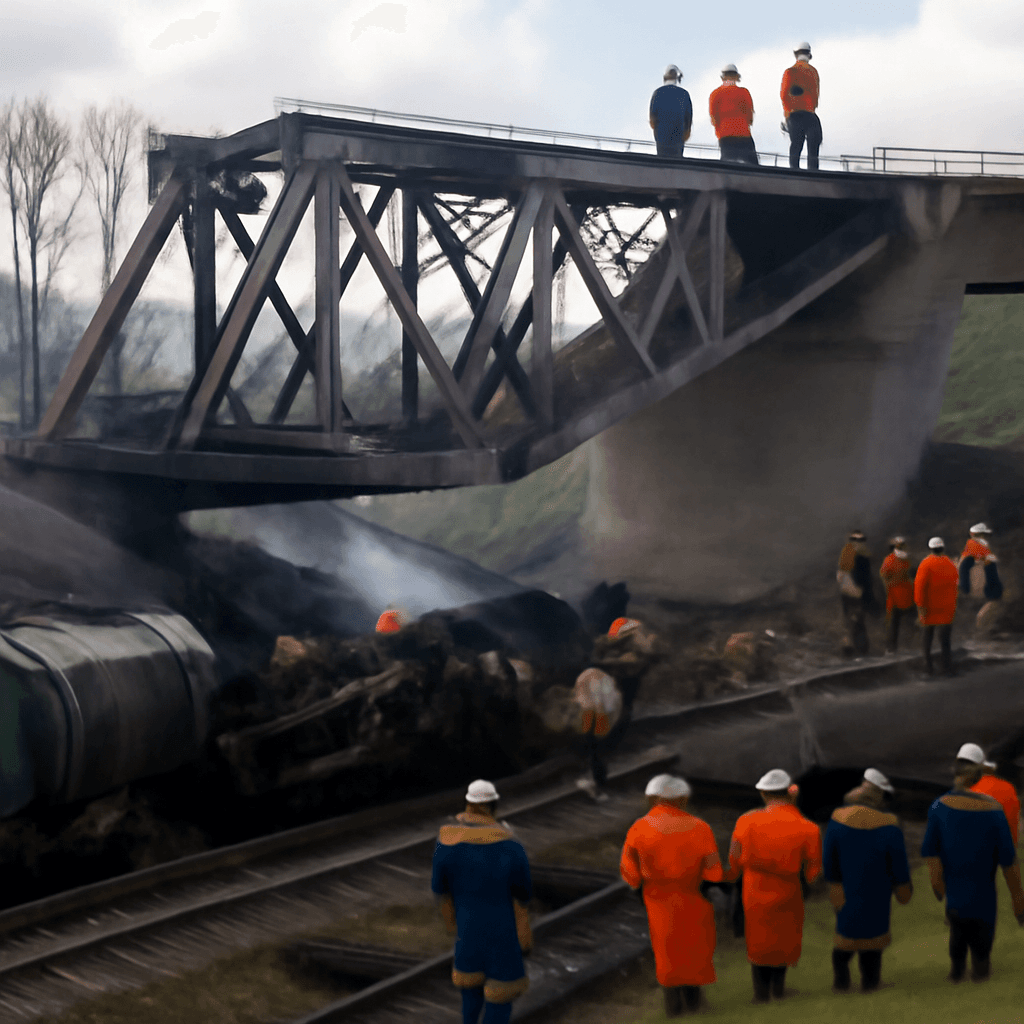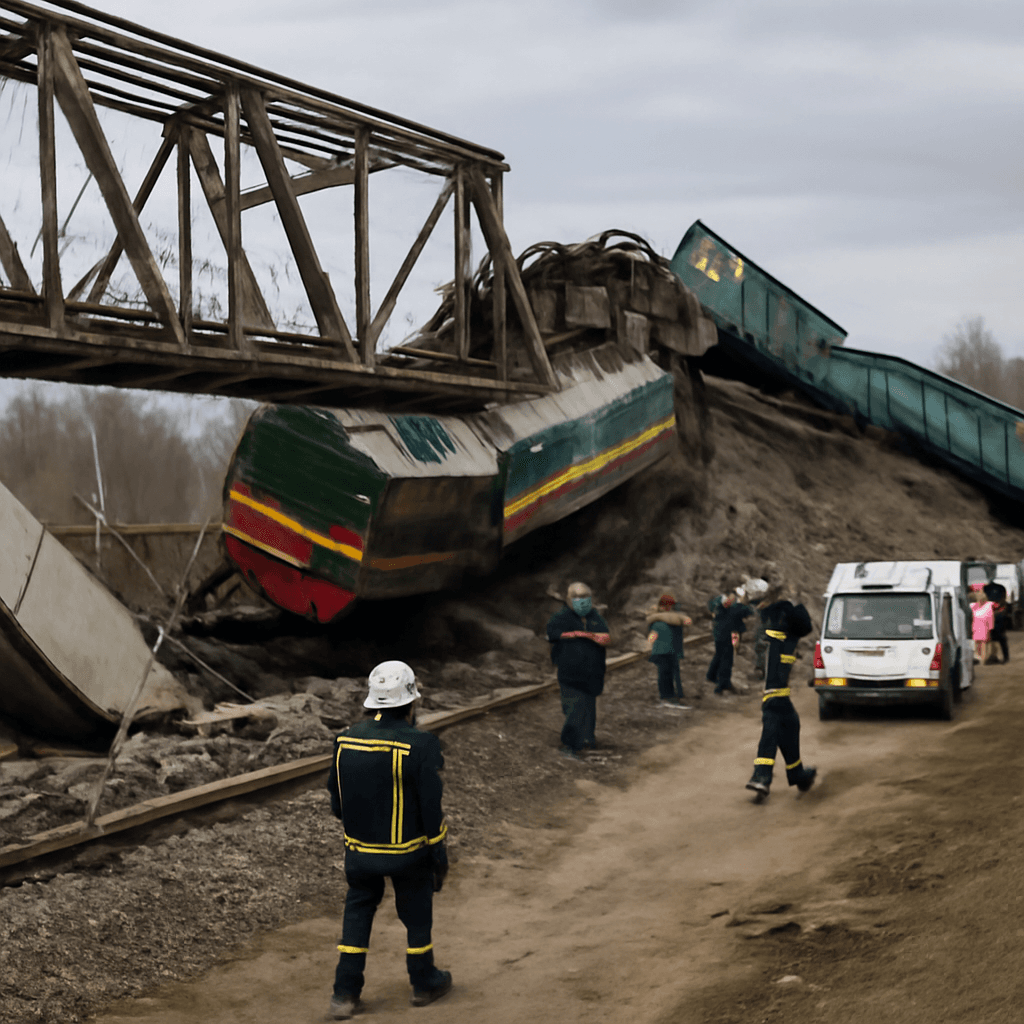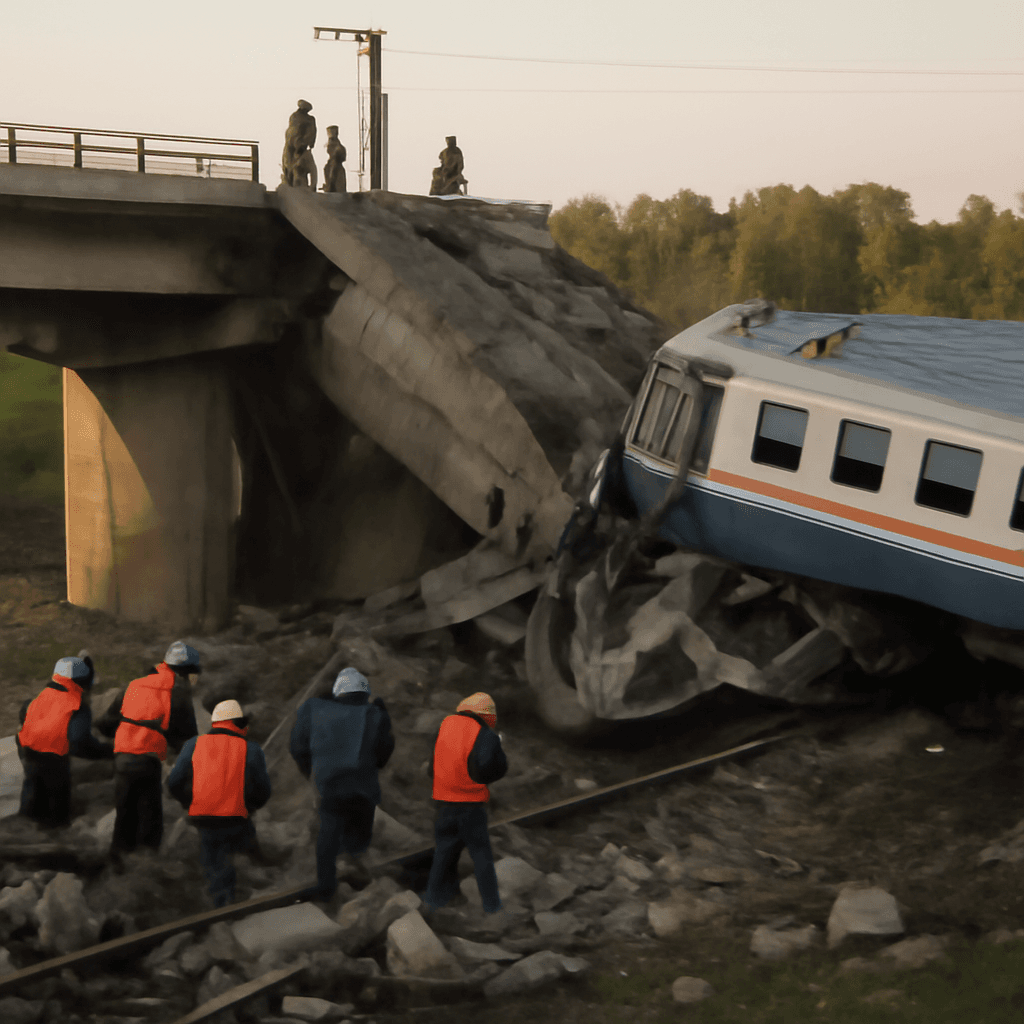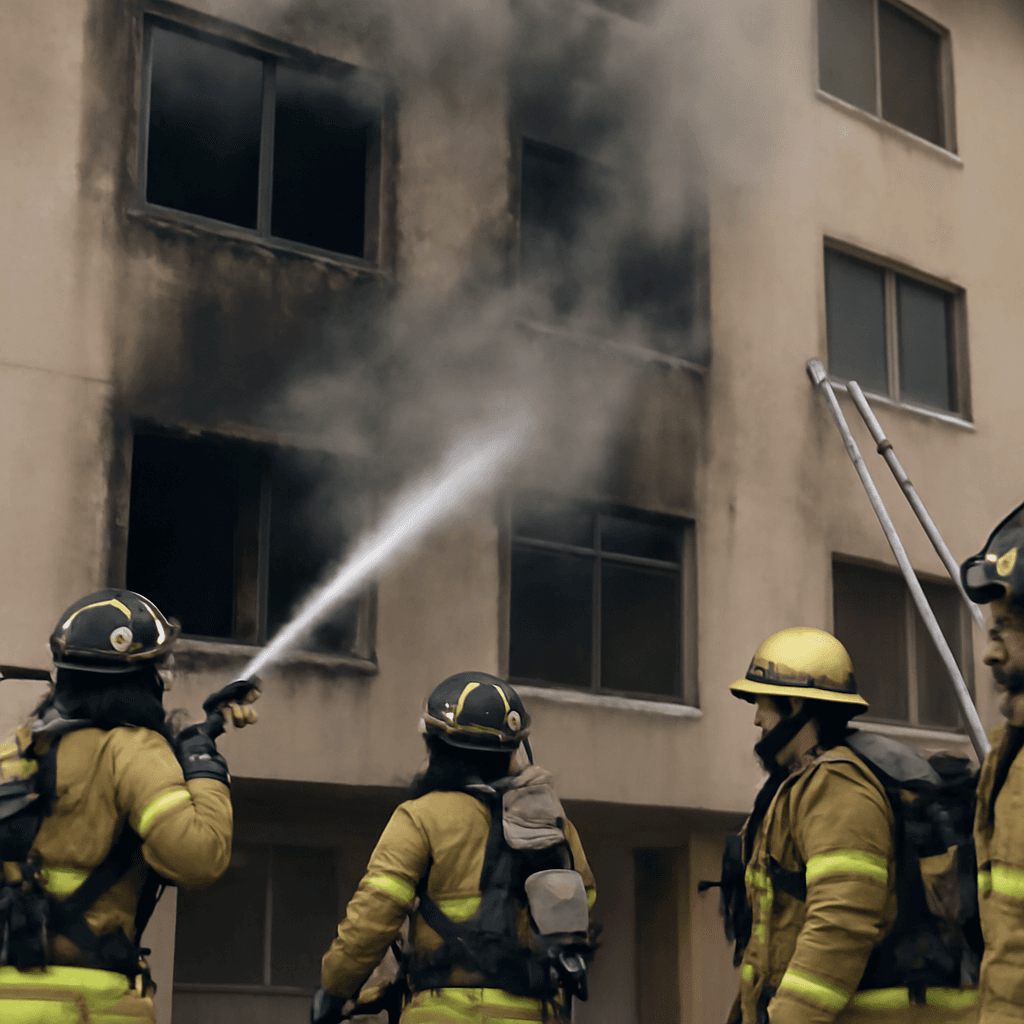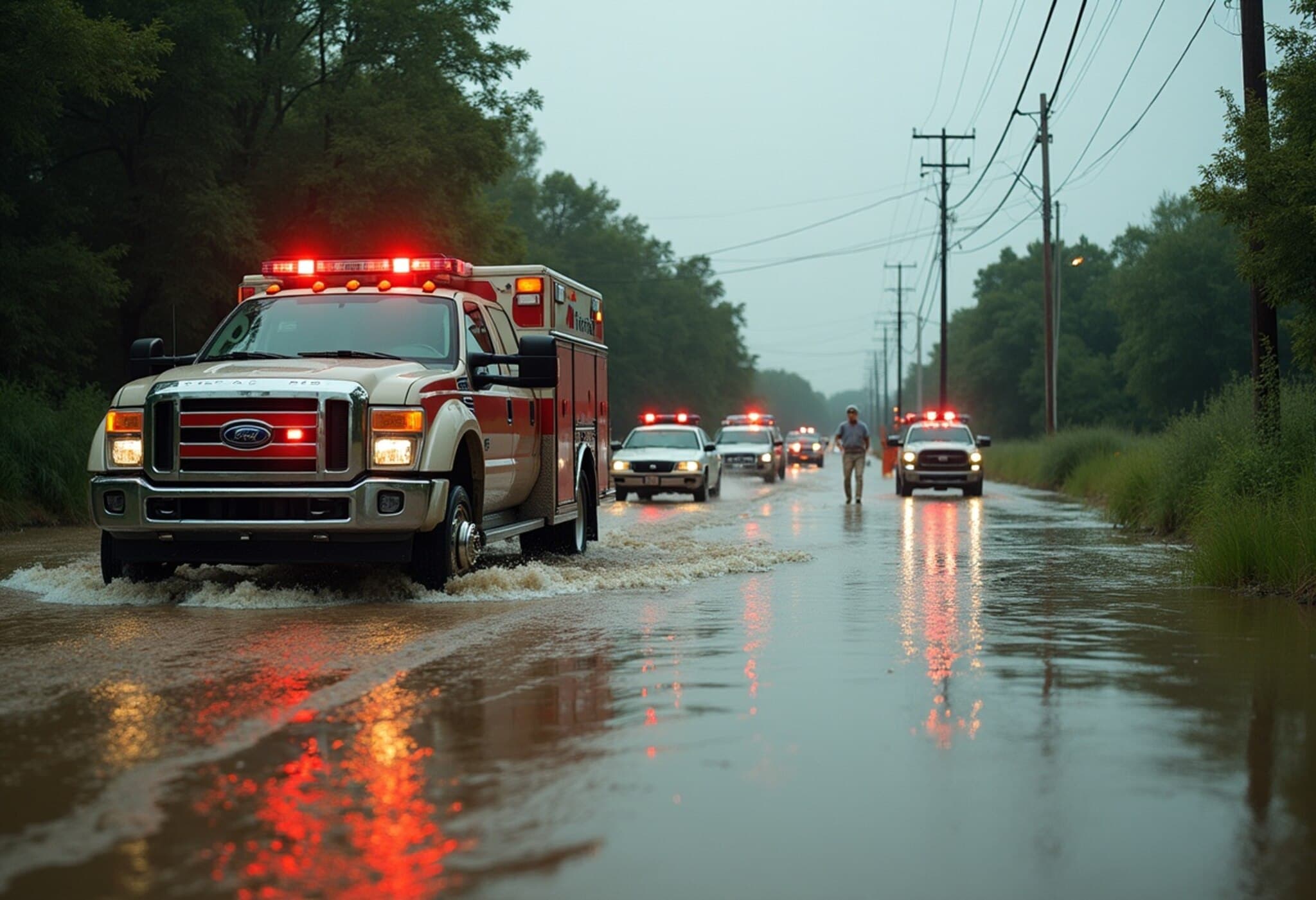Train Derailment in Bryansk Region Claims Lives and Causes Numerous Injuries
On the night of May 31, 2025, a tragic train derailment occurred in Russia's Bryansk region, resulting in the deaths of at least seven individuals and injuries to around 30 passengers. The incident took place when a passenger train traveling from Moscow to Klimov went off the rails following the collapse of a bridge in the Vygonichsky district.
Incident Details and Immediate Response
The derailment affected the train's locomotive and multiple carriages due to the failure of a span structure of a road bridge. Russian Railways indicated the collapse may have been caused by illegal interference with transport infrastructure operations. The accident happened near a federal highway, prompting rapid deployment of emergency and rescue services.
Regional authorities confirmed that numerous rescue teams, including approximately 180 personnel from the emergency ministry, worked on-site to assist victims and clear the area. Visual footage circulated on social platforms depicted severely damaged train cars scattered alongside broken bridge segments, with some vehicles narrowly escaping the collapse.
Fatalities and Injuries
- 7 confirmed dead, including the train driver
- 30 injured passengers receiving medical treatment
The inclusion of the train operator among the deceased further underscores the severity of the crash.
Preliminary Cause and Investigations
While the exact cause remains under investigation, early reports suggest the bridge might have collapsed due to unauthorized human interference. Some independent sources have even speculated about possible deliberate sabotage, though authorities have not officially confirmed these claims.
Ongoing investigations aim to clarify the circumstances leading to the infrastructure failure and determine accountability.
Significance and Safety Implications
This catastrophic accident highlights critical concerns regarding railway infrastructure maintenance and the importance of securing transport assets against potential tampering. It also raises urgent questions about improving safety protocols to prevent such incidents in the future, especially on vital routes connecting major cities.

